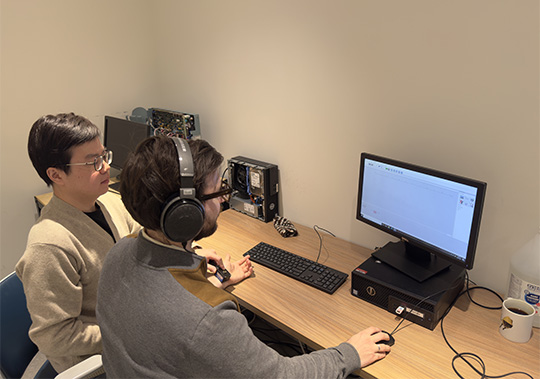Finding the right tempo for pain relief

The human body has a natural rhythm, and that rhythm within all of us has now been shown to relieve pain.
Dr. Mathieu Roy and Dr. Caroline Palmer of McGill University found that music with a tempo matching a person’s internal rhythm—or spontaneous production rate—helps relieve pain, though the exact biological mechanism still needs to be studied.
This discovery could be a big relief for the approximately 20% of Canadians experiencing chronic pain.
“Our hypothesis was that if we played music for patients at the particular tempo of their spontaneous production rate, it would have a strong hypoalgesia effect,” says Dr. Roy. “And that’s exactly what we found.”
Along with musical relief, Dr. Roy’s lab studies exercise interventions for chronic pain and factors such as expectations and emptions around pain. Non-pharmacological approaches like distractions or performing a favourite activity can help lessen acute and chronic pain. For instance, if someone really likes chess, playing chess reduces their pain substantially.
“For chronic pain, my lab is studying factors which have an impact on the pain itself and help people adjust to their condition,” says Dr. Roy.
There are two future lines of research: to figure out the exact biological mechanism between music and pain relief, and to find the best way to implement the findings on a wider scale.
“It would be relatively easy to implement this,” says Dr. Roy. “Recording the spontaneous production rhythm is very easy to do, and then we can match the rhythm of music.” Dr. Roy says that it could be as easy as playing a song on Spotify at the right tempo, though there is a bigger scope for therapeutic practices by combining this research with more structured music therapy where a therapist works one-on-one to meet a client’s complex needs.
“This is the simple administration of music as if it was a pill,” says Dr. Roy.
Overall, “music as medicine,” as Dr. Roy describes it, is a low-cost intervention with no negative side effects, and for somebody experiencing acute or chronic pain, the research shows that it offers some relief.
At a glance
Issue
Pain is often managed with pharmaceuticals, but some non-pharmaceutical options also exist to lessen the feeling of pain, including music. With 20% of Canadians experiencing chronic pain, finding new, drug-free ways to relieve it would make a big impact.
Research
Supported by the Canadian Institutes of Health Research and the Natural Sciences and Engineering Research Council of Canada, Dr. Roy and Dr. Caroline Palmer demonstrated that music played at the patient’s spontaneous production rhythm results in a measurable decrease in pain. Music matching the tempo of a patient’s internal rhythm decreases pain more than music played faster or slower.
Address correspondence to wenbo.yi@mail.mcgill.ca.
- Date modified: